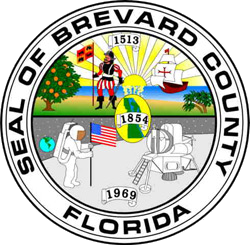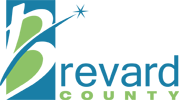Category:Brevard County: Difference between revisions
mNo edit summary |
mNo edit summary |
||
| (20 intermediate revisions by the same user not shown) | |||
| Line 1: | Line 1: | ||
<div class="irlbody"> | <div class="irlbody"> | ||
{{IRL header}} | {{IRL header|cat=Florida|toc=no}} | ||
<div class="irlcontenttop"> | <div class="irlcontenttop"> | ||
Brevard County is located on Central Florida's East Coast. It is bounded by the St. Johns River plain on the west and the Atlantic Ocean on the east. Strongly influenced by the John F. Kennedy Space Center, Brevard County is also known as the Space Coast and was designated with the telephone area code 321, as in 3-2-1 liftoff. | Brevard County is located on Central Florida's East Coast. It is bounded by the St. Johns River plain on the west and the Atlantic Ocean on the east. Strongly influenced by the John F. Kennedy Space Center, Brevard County is also known as the Space Coast and was designated with the telephone area code 321, as in 3-2-1 liftoff. | ||
[[File:Space Shuttle Columbia launching.jpg|320px|thumb|right|alt=Space Shuttle Columbia launching from Kennedy Space Center|Space Shuttle Columbia]] | |||
In 1982, Brevard construction workers at Windover Farms uncovered a human burial ground over 8000yrs old.<ref name="WindoverDig" /> The Florida Legislature established Brevard County in 1854. The county is named after Theodore Washington Brevard, an early Florida settler and state comptroller.<ref name="BrevardHistory" /> As of the 2010 census, the population was 543,376, making it the 10th most populated county in Florida.<ref name="QF" /> | |||
[[File:Seal of brevard.png|border|320px|thumb|right|alt=Seal of Brevard County, Florida|Brevard County Seal]] | |||
72 mile long Brevard County has a total area of 1,557 square miles (4,030 km2), of which 1,016 square miles (2,630 km2) is land and 541 square miles (1,400 km2) (34.8%) is water.<ref name="GR1" /> Most of Brevard's water is the Atlantic Ocean, the St. Johns River, and the [[Indian River Lagoon Estuary]]. The Atlantic Intracoastal Waterway (ICW) is the nation's navigational channel through [[Mosquito Lagoon]] and [[Indian River]] in Brevard County. Dredging for the 10-12ft deep Intracoastal Waterway created 41 spoil islands in the Brevard portion of the Indian River.<ref name="Spoilhistory" /> | |||
Brevard County government has historically labeled the Atlantic beach areas differently; North Reach includes 9.4 miles (15.1 km) in Cape Canaveral and Cocoa Beach; Patrick Space Force Base beach is 4.1 miles (6.6 km); Mid Reach includes the 7.6 miles (12.2 km) in Satellite Beach; South Reach includes the 3.8 miles (6.1 km) in Indialantic and Melbourne Beach; South Beaches includes 14.5 miles (23.3 km) south of Melbourne Beach to Sebastian.<ref name="Brevardbeach" /> | |||
[[File:Brevard logo.png|border|320px|thumb|right|alt=Brevard County Logo|Brevard County Logo]] | |||
There are 250 square miles (650 km2) of federally protected wildlife refuges in Brevard County. These lands include [[Merritt Island National Wildlife Refuge]], [[Canaveral National Seashore]], St. Johns National Wildlife Refuge, Archie Carr National Wildlife Refuge, St. Johns River Water Management District conservation areas, Brevard Environmentally Endangered Lands, and Florida's ''Outstanding Florida Water'' aquatic preserves. | |||
Containing 71% of the [[Indian River Lagoon Estuary|Indian River Lagoon National Estuary]], and almost 50% of it's length<ref name="SOIRL2020" />, Brevard County is home to the entire [[Banana River]], most of | Containing 71% of the [[Indian River Lagoon Estuary|Indian River Lagoon National Estuary]], and almost 50% of it's length<ref name="SOIRL2020" />, Brevard County is home to the entire [[Banana River]], most of [[Mosquito Lagoon]], and the North and Central zones of the [[Indian River]]. On November 8th, 2016 Brevard County residents voted to collect a .5% sales tax to fund it's [[Save Our Indian River Lagoon]] restoration program. | ||
Click an arrow below to view the pages in each category. | View the [[Brevard County|Brevard County - Indian River Lagoon Encyclopedia Article]] for more about Brevard County. | ||
Click an arrow below to view the pages in each Brevard County category. | |||
<categorytree mode="pages" depth="1">Brevard County</categorytree> | <categorytree mode="pages" depth="1">Brevard County</categorytree> | ||
</div> | </div> | ||
<div class=" | <div class="irlcontentbottom"> | ||
== | ==See Also== | ||
* [[Brevard County]] | |||
* [[Indian River Lagoon Estuary]] | |||
* [[Banana River]] | |||
* [[Indian River]] | |||
* [[Mosquito Lagoon]] | |||
* | |||
* [[ | |||
==Web Links== | ==Web Links== | ||
* [https://www.brevardfl.gov/SaveOurLagoon/Home Save Our Indian River Lagoon] | * [https://www.brevardfl.gov/SaveOurLagoon/Home Save Our Indian River Lagoon] | ||
* [https://spoilislandproject.org/ Indian River Lagoon Spoil Island Project] | |||
* [https://myfloridahistory.org/default Florida Historical Society] | |||
* [https://www.brevardfl.gov/HistoricalCommission Brevard County Historical Commission] | |||
==References== | ==References== | ||
<references> | <references> | ||
<ref name="WindoverDig">[https://myfloridahistory.org/frontiers/article/1 Florida Historical Society - The Windover Dig]</ref> | |||
<ref name="QF">[https://web.archive.org/web/20110607113614/http://quickfacts.census.gov/qfd/states/12/12009.html 2010 US Census Quick Facts]</ref> | <ref name="QF">[https://web.archive.org/web/20110607113614/http://quickfacts.census.gov/qfd/states/12/12009.html 2010 US Census Quick Facts]</ref> | ||
<ref name=" | <ref name="BrevardHistory">[https://www.brevardfl.gov/HistoricalCommission/HistorySummary Brevard County Historical Commission Summary]</ref> | ||
<ref name="SOIRL2020">[https://www.brevardfl.gov/docs/default-source/soirl/final-2020-save-our-indian-river-lagoon-project-plan-update.docx?sfvrsn=c19bfb61_4 2020 Save Our Indian River Lagoon Plan Update (DOC)]</ref> | <ref name="SOIRL2020">[https://www.brevardfl.gov/docs/default-source/soirl/final-2020-save-our-indian-river-lagoon-project-plan-update.docx?sfvrsn=c19bfb61_4 2020 Save Our Indian River Lagoon Plan Update (DOC)]</ref> | ||
<ref name="GR1">[https://www.census.gov/geographies/reference-files/time-series/geo/gazetteer-files.html US Gazetteer files: 2010, 2000, and 1990]</ref> | <ref name="GR1">[https://www.census.gov/geographies/reference-files/time-series/geo/gazetteer-files.html US Gazetteer files: 2010, 2000, and 1990]</ref> | ||
<ref name="Spoilhistory">[http://spoilislandproject.org Spoil Island Project History]</ref> | <ref name="Spoilhistory">[http://spoilislandproject.org Spoil Island Project History]</ref> | ||
<ref name="Brevardbeach">[ | <ref name="Brevardbeach">[https://www.brevardfl.gov/NaturalResources/Beaches/RestorationProjects Brevard Beach Restoration Projects]</ref> | ||
</references> | </references> | ||
</div> | </div> | ||
</div> | </div> | ||
[[Category:Florida]] | [[Category:Florida]] | ||
Latest revision as of 14:18, December 26, 2021
Brevard County is located on Central Florida's East Coast. It is bounded by the St. Johns River plain on the west and the Atlantic Ocean on the east. Strongly influenced by the John F. Kennedy Space Center, Brevard County is also known as the Space Coast and was designated with the telephone area code 321, as in 3-2-1 liftoff.

In 1982, Brevard construction workers at Windover Farms uncovered a human burial ground over 8000yrs old.[1] The Florida Legislature established Brevard County in 1854. The county is named after Theodore Washington Brevard, an early Florida settler and state comptroller.[2] As of the 2010 census, the population was 543,376, making it the 10th most populated county in Florida.[3]

72 mile long Brevard County has a total area of 1,557 square miles (4,030 km2), of which 1,016 square miles (2,630 km2) is land and 541 square miles (1,400 km2) (34.8%) is water.[4] Most of Brevard's water is the Atlantic Ocean, the St. Johns River, and the Indian River Lagoon Estuary. The Atlantic Intracoastal Waterway (ICW) is the nation's navigational channel through Mosquito Lagoon and Indian River in Brevard County. Dredging for the 10-12ft deep Intracoastal Waterway created 41 spoil islands in the Brevard portion of the Indian River.[5]
Brevard County government has historically labeled the Atlantic beach areas differently; North Reach includes 9.4 miles (15.1 km) in Cape Canaveral and Cocoa Beach; Patrick Space Force Base beach is 4.1 miles (6.6 km); Mid Reach includes the 7.6 miles (12.2 km) in Satellite Beach; South Reach includes the 3.8 miles (6.1 km) in Indialantic and Melbourne Beach; South Beaches includes 14.5 miles (23.3 km) south of Melbourne Beach to Sebastian.[6]

There are 250 square miles (650 km2) of federally protected wildlife refuges in Brevard County. These lands include Merritt Island National Wildlife Refuge, Canaveral National Seashore, St. Johns National Wildlife Refuge, Archie Carr National Wildlife Refuge, St. Johns River Water Management District conservation areas, Brevard Environmentally Endangered Lands, and Florida's Outstanding Florida Water aquatic preserves.
Containing 71% of the Indian River Lagoon National Estuary, and almost 50% of it's length[7], Brevard County is home to the entire Banana River, most of Mosquito Lagoon, and the North and Central zones of the Indian River. On November 8th, 2016 Brevard County residents voted to collect a .5% sales tax to fund it's Save Our Indian River Lagoon restoration program.
View the Brevard County - Indian River Lagoon Encyclopedia Article for more about Brevard County.
Click an arrow below to view the pages in each Brevard County category.
See Also
Web Links
- Save Our Indian River Lagoon
- Indian River Lagoon Spoil Island Project
- Florida Historical Society
- Brevard County Historical Commission
References
Subcategories
This category has the following 3 subcategories, out of 3 total.
B
- Brevard County Bridges (11 P)
Pages in category "Brevard County"
The following 3 pages are in this category, out of 3 total.